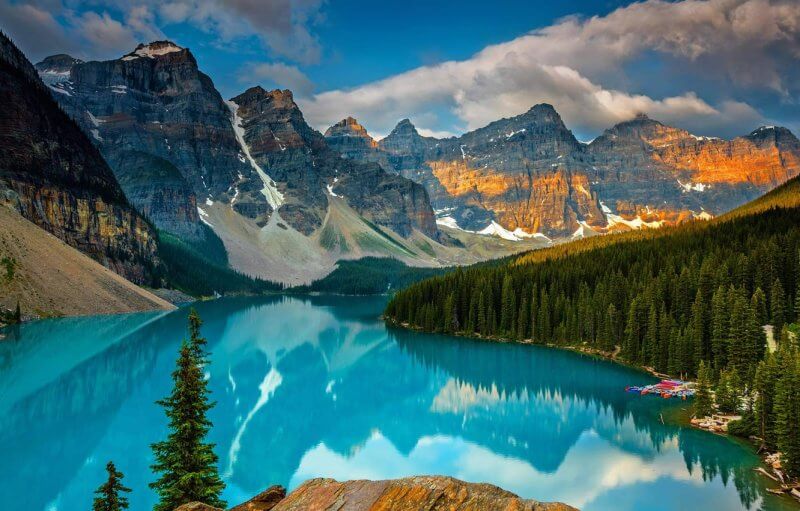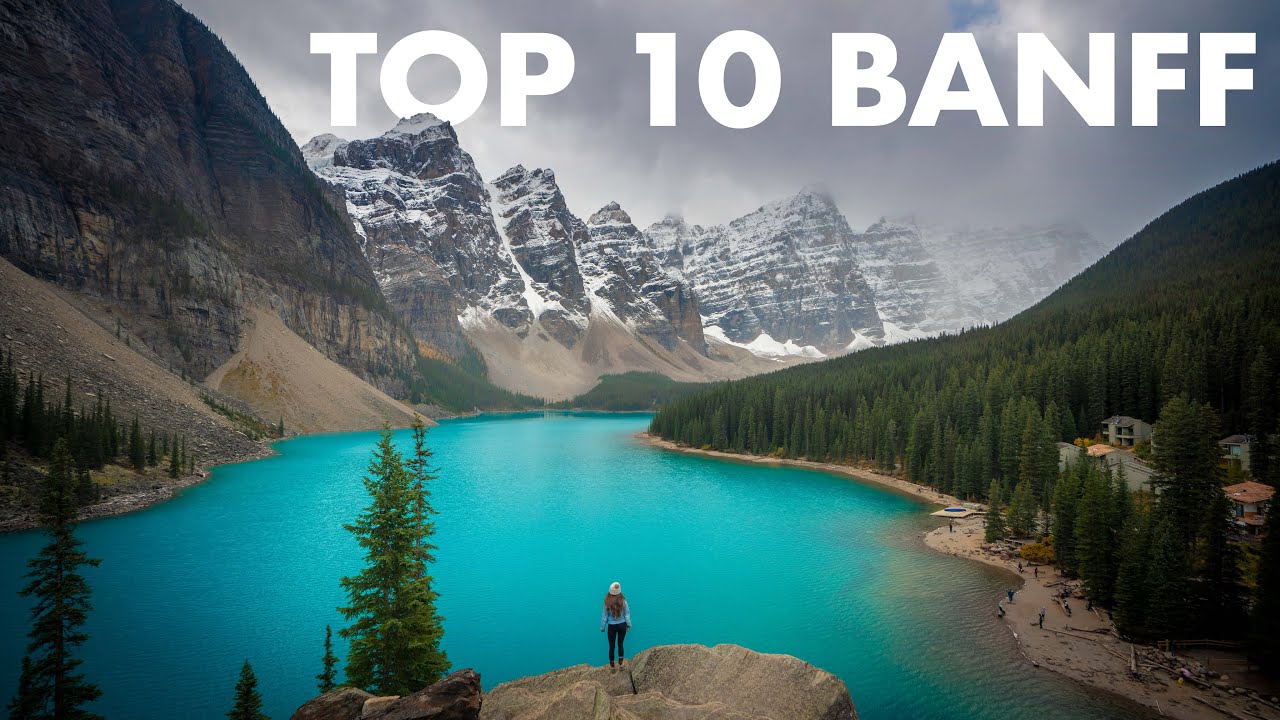Every traveler will find something special in Banff, whether it’s the rocky peaks, impressive valleys, picturesque lakes, or all of the above. This unique place allows you to literally merge with nature – welcome to Banff National Park, Canada.
Banff: A Brief Overview
The reserve, covering an area of 6,641 km², is the largest in Canada and the third largest on the planet. Every year, 4 million guests from various parts of the world visit for its natural beauty and outdoor adventures.
Banff is located in the province of Alberta, in the Rocky Mountains, 150 km west of Calgary.
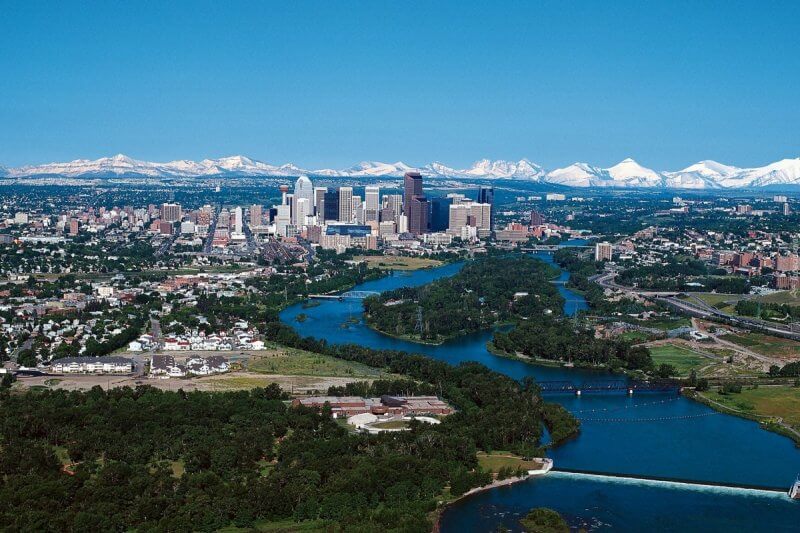
Interesting Fact! Banff was the first of Canada’s national parks, established in 1885. Since 1984, it has been a UNESCO World Heritage site.
The reserve features few plains but includes highlands with mountain peaks, glaciers, and thermal springs. Unique attractions in the park include its lakes, such as Louise, Peyto, and Moraine with crystal-clear water ranging from emerald green to blue.
The bustling town of Banff and the small village of Lake Louise are situated at the foothills of the mountains within the national reserve.
Climate, Flora, and Fauna
The proximity to the mountains influences the park’s terrain and climatic conditions.
Summer: The weather is mild and sunny, although low temperatures aren’t uncommon. July is the warmest month, with temperatures averaging +22°C. During this time, alpine zones come alive: lakes take on bright turquoise hues, wildflowers bloom, and high-altitude trails mostly clear of snow.
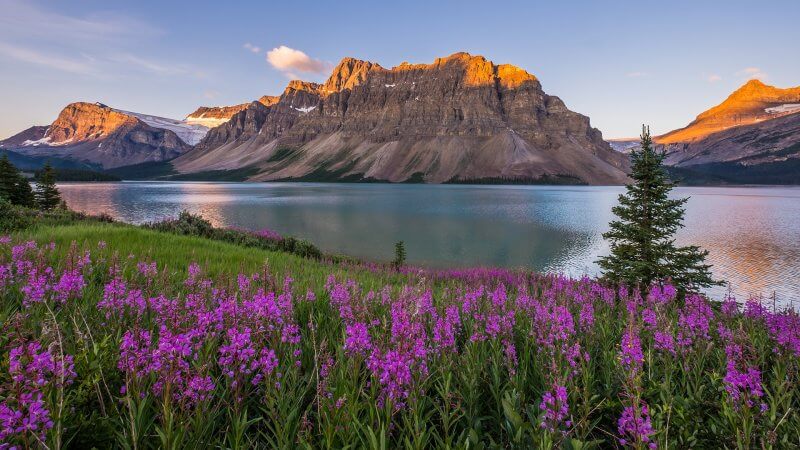
Winter: Winters are cold, dry, and snowy, with an average snowfall of 22-25 cm. January is the coldest month, averaging –15 °C, but temperatures can sometimes drop to –30 °C.
More than 55% of Banff National Park is covered in mountain forests, mainly coniferous trees like pines, junipers, and the national treasure – Canadian spruces. The park boasts 243 species of mosses and numerous northern flowers such as stemless silene, Linnaea, and alpine forget-me-not.
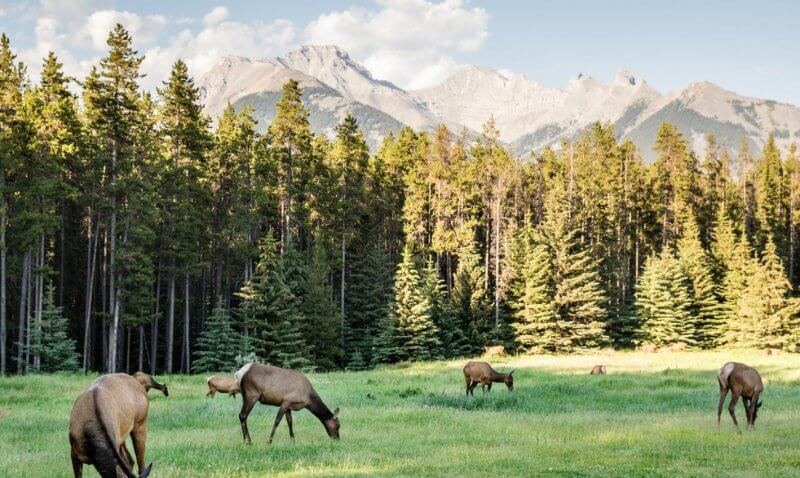
The fauna of the reserve is also diverse, housing 56 species of animals and 200 species of birds. The red squirrel is a prominent local resident, while birds like eagles and American cedar waxwings are common.
Things To Do in Banff
Banff National Park in Canada offers something fascinating for every visitor at any time of the year. With over 1600 km of hiking trails, three world-class ski resorts, climbing, mountaineering, and horseback riding, there are endless activities to enjoy. We’ll highlight some of the most interesting and popular ones.
Important! If your main aim is to engage in winter sports, it’s best to visit the park from November to early June. Summer activities in Banff begin in June, but bear in mind that July and August are peak tourist months.
Visit the Lakes
Banff’s lakes are so beautiful that they have become the hallmark of this Canadian reserve. It’s best to visit Moraine Lake in June when it’s at its fullest, while Louise is accessible year-round. These bodies of water boast clear glacial waters reflecting the blue sky, snow-capped mountain peaks, and tall trees. Even in summer, the water remains too cold for swimming, not exceeding +10 °C, but conditions are ideal for boating.
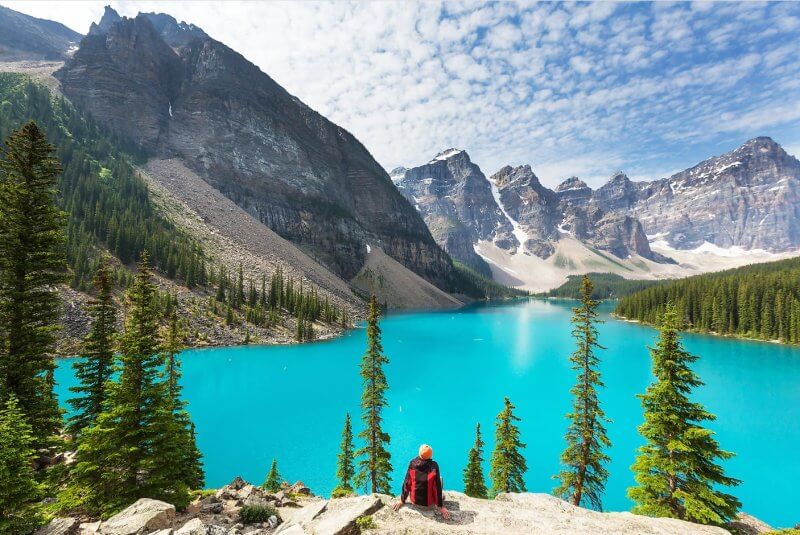
At Lake Louise, spacious wooden docks feature boathouses with canoes for summer outings. Boating has the advantage of accessing picturesque bays not reachable from the shore. Extreme sports enthusiasts can enjoy river rafting, ending in the lake. In winter, Lake Louise offers ice skating, snowshoeing, and ice fishing.
Moraine Lake is located behind Lake Louise, connected by a 13-km road. The areas around Louise and Moraine are crisscrossed with hiking and biking trails. A popular yet challenging trail leads from Moraine to Sentinel Pass, one of the highest points in this national park.
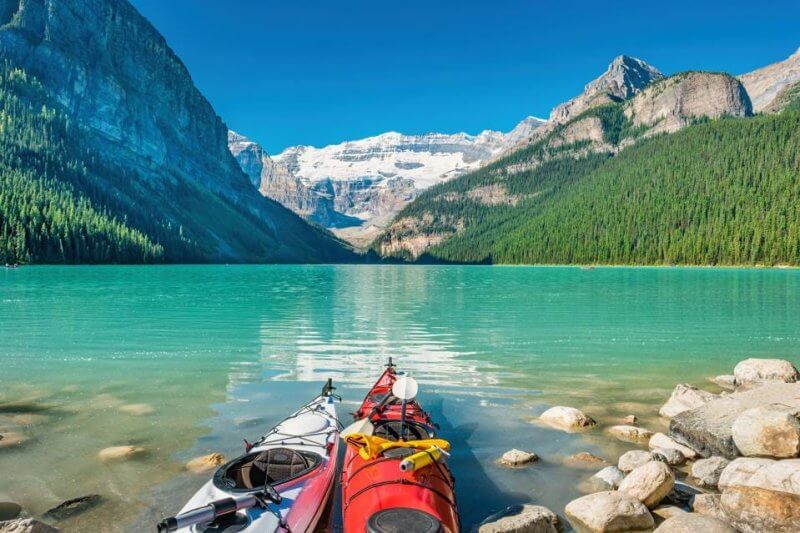
The largest lake in the reserve, Minnewanka, is 11 km northeast of the town of Banff. Minnewanka is the only lake in the reserve where motorboats are allowed.
Ride the Gondola to the Viewing Platform
In Banff, as in other parts of the Rockies, there is a gondola lift. The gondola takes tourists to the top of Sulphur Mountain, where observation platforms are set up. On the mountain, there’s a self-guided hiking trail, 1 km long, for a leisurely walk, offering views of the mountain range and Bow Valley, perfect for unique photos. Visitors can also stop by the Sanson Peak weather station to learn about weather changes in this region over the past 30 years.
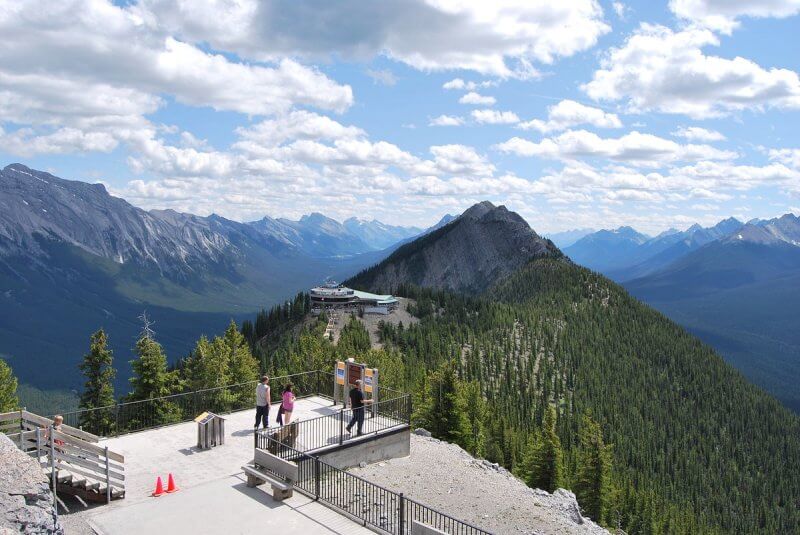
Lower Lift Station Address: 100 Mountain Ave, Banff, AB T1L 1B2, Canada.
Round Trip Cost: $69.
Operating Hours: Friday and Saturday from 10:00 AM to 10:00 PM, and other days from 10:00 AM to 9:00 PM.
Dine at Sky Bistro
At the top of Sulphur Mountain, near the gondola station, is Sky Bistro. After a promenade and photo session at the mountain peak, you can settle at a cozy table in the restaurant, order lunch, and enjoy your meal while gazing at the mountain scenery. The panoramic window views are truly luxurious.
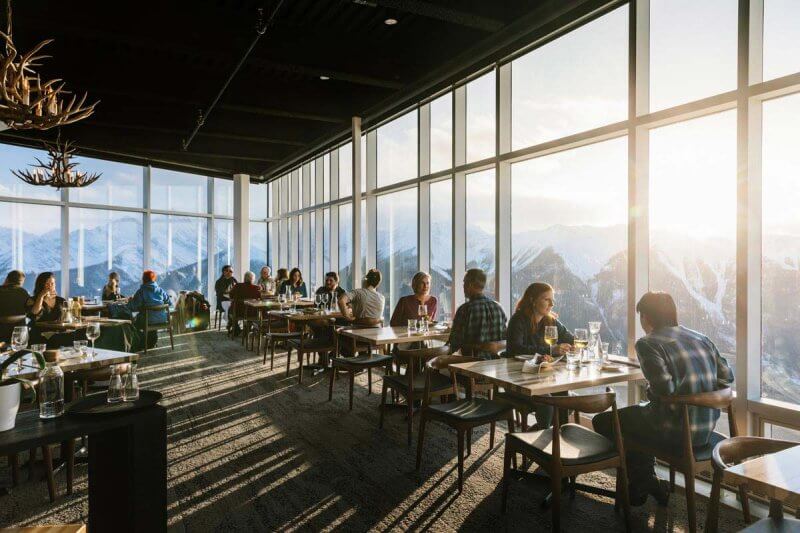
In terms of food, Sky Bistro is praised for its duck confit and tartare, and for dessert, the chocolate mousse and cupcakes come highly recommended.
Address: 100 Mountain Ave, Banff, AB T1L 1J3, Canada.
Operating Hours: Monday and Tuesday from 11:00 AM to 3:00 PM, and other days from 11:00 AM to 9:00 PM with a lunch break from 2:00 PM to 4:00 PM.
Ski at the Winter Resort
From November to almost the beginning of June, Banff National Park transforms into a ski resort.
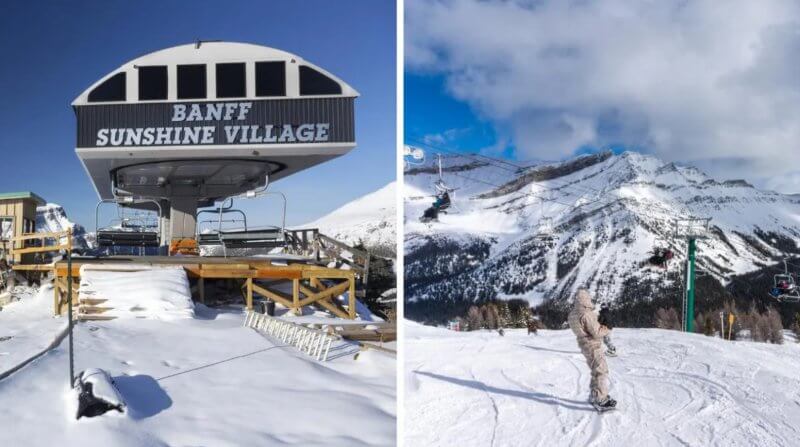
Sunshine Village is the highest-altitude resort in Canada, known for its abundant snow. There are trails of varying difficulty for both beginners and professionals. Advanced skiers and snowboarders will enjoy the black runs at Goat’s Eye.
Lake Louise, the largest ski area, is 30 minutes from Banff. The resort offers ski trails of various difficulties, with terrain that includes steep and gentle slopes in open areas and forests.
Visit the Hot Springs
Interesting Fact! The hot springs are the natural wonder that led to the creation of Banff National Park. When thermal springs were discovered in a cave in 1885, the first national reserve was established around it. Over the years, the reserve expanded, forming the modern park. While bathing in the cave springs is no longer allowed, it’s still worth a visit.
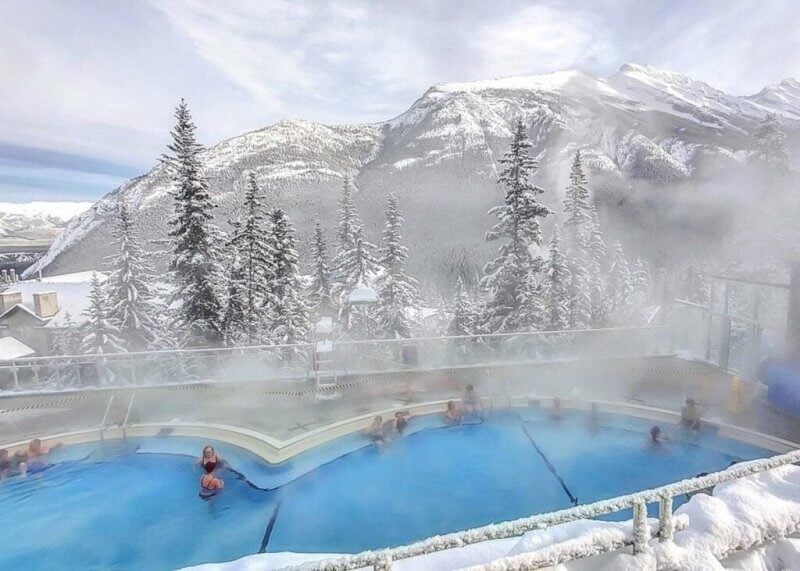
The modern luxury spa offers guests natural outdoor pools heated by thermal underground waters up to +40 °C. It’s a great place for wellness, as Banff’s thermal springs have several beneficial properties:
- The magnesium in the water helps relax muscles and reduce stress levels. Additionally, hot water can stimulate the release of endorphins – natural painkillers that help alleviate pain and improve mood.
- The water contains beneficial minerals like sulfates, calcium, and sodium, which help reduce inflammation and muscle and joint pain. The mineral-rich waters also aid skin recovery and maintain its overall tone.
- Inhaling steam from the hot springs can benefit people with respiratory issues like asthma and bronchitis, helping to expand the airways and improve breathing.
- Visiting Banff’s thermal springs positively impacts overall health, boosts immunity, and enhances mood.
Tip! It’s best to visit the springs in the morning when there are fewer people, allowing you to enjoy the pool in peace.
Where to Stay
The town of Banff is located within the national reserve, and northwest of it, just 15 km from Lake Louise, is the charming village of Lake Louise.
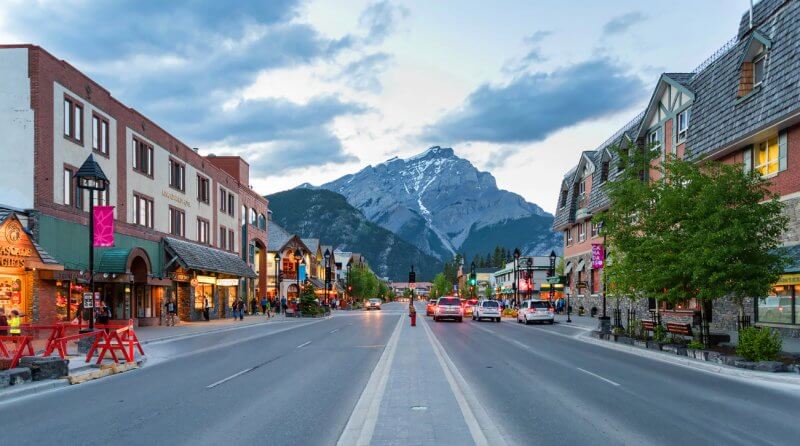
These settlements offer a variety of accommodation options – every traveler can find something suitable:
- Ski Resort Hotels: Offering standard rooms and VIP suites. Top-rated hotels include Fairmont Banff Springs – a historic national treasure and iconic luxury spot in the heart of the reserve, Rimrock Resort Hotel, and Banff Park Lodge.
- Motels and Hostels: Several motels and hostels in the park offer simple and comfortable rooms. The best ones include HL-Banff Alpine Centre, Banff International Hostel, and Samesun Banff.
- Cottages and Family Chalets: Entire cottages are available for rent within the park, ideal for large groups and families. Recommended are Banff Beaver Cabins, Hidden Ridge Resort, and Buffalo Mountain Lodge.
- Tent Camps and Campgrounds: The park offers nearly 2,500 campsites with varying comfort levels, including kitchens, bathrooms, and laundries. Popular options for nature lovers are Tunnel Mountain Village II, Two Jack Main, Lake Louise Trailer, Tunnel Mountain Campground, Two Jack Lakeside Campground, Rampart Creek, and Waterfowl Lake.
Important! It’s essential to book accommodation in advance, especially during peak seasons, to ensure a guaranteed place to stay.
Practical Information
Address: Improvement District No. 9, Alberta, Canada.
Official Website: www.banfflakelouise.com/banff-national-park.
How to Get There
The main starting point is Calgary, where the international airport is located, but you can also get to the park from other cities:
- By bus: Brewster or Greyhound companies offer regular routes from many cities in British Columbia.
- By tour: From Calgary and Vancouver.
- By car: From Calgary via Highway 1, from Red Deer and Rocky Mountain House via Highway 11, from Cranbrook via Highway 93.
Important! You can drive through Banff National Park, making the journey as comfortable as possible.
Admission Fees

To visit the national park, you need a special pass, Parks Canada Pass.
You can buy the pass:
- At one of the ticket offices located at the park gates.
- At the tourist center in Banff town or Lake Louise village.
- Online on the official website.
There are two types of passes: an annual pass for $134 and a daily pass for $19.80. The cost is per vehicle entering Banff, regardless of the number of people traveling in it.

